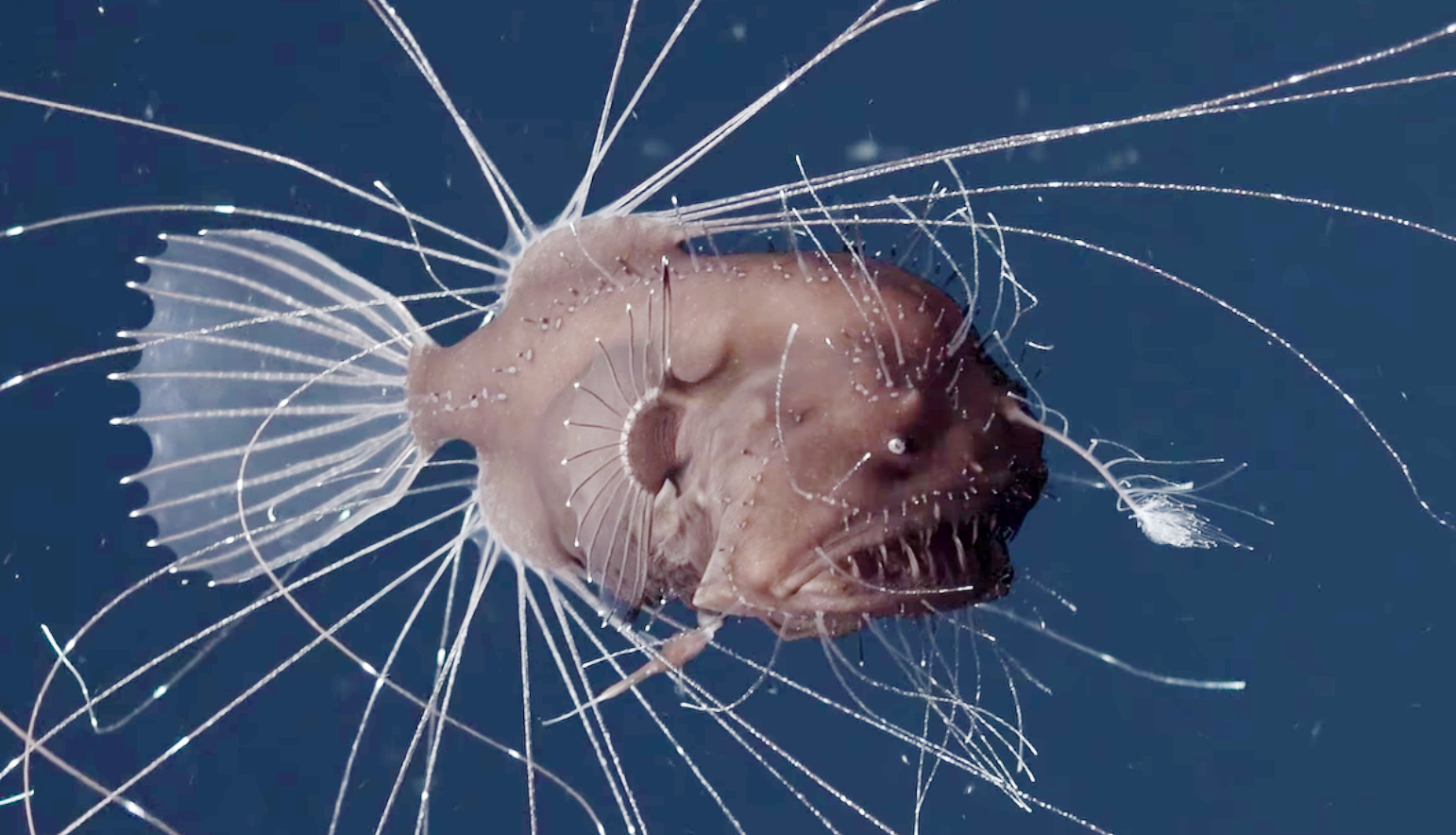
Interestingly, there have been some unusual sightings of larger anglerfish in recent years. So, while they may not be as imposing as their larger counterparts, they are still a wonder to behold. According to the National Oceanic and Atmospheric Administration, the average size of an anglerfish is less than a foot in length. In fact, many species are quite small and delicate in appearance. On the other hand, not all anglerfish are large and imposing. Their elongated bodies and impressive size make them a fascinating sight for those lucky enough to encounter one in the wild. These creatures can reach a length of 1.2 meters (3.9 feet), making them quite a formidable presence in the deep sea. Cabrillo Marine Aquarium.Firstly, let’s talk about the largest species of anglerfish, Krøyer’s deep sea angler fish, also known as the sea devil. "Beachgoer discovers rare terrifying 'football fish' on Southern California shore".

The jaw lacks teeth, whereas those of the denticular bone have fused into a larger mass the upper denticular bone possesses 10–17 hooked denticles. The pterygiophore of the illicium does not protrude from the snout, and there is no hyoid barbel.Īt maturity, the streamlined males have an enlarged posterior nostril (with 10–17 lamellae) slightly ovoid eye with an enlarged pupil creating a narrow anterior aphakic space no ilicium or esca and the head and body is covered in dermal spinules, those along the snout midline being enlarged. Escal morphology varies between species, and it may or may not possess denticles or accessory appendages, the latter either branched or unbranched. Originating above or slightly in advance of the small eye is an illicium (the "fishing rod") and at its end a bioluminescent, bulbous esca (the "fishing lure", its light owing to symbiotic bacteria). Footballfish females differ from those of other ceratioid families by their shortened, blunt snout along with the chin, it is covered in sensory papillae. The subequal jaws are anteriorly lined with rows of numerous close-set, depressible, and retrorse teeth vomerine teeth are absent.

In females, the mouth is large and oblique. Both are a reddish brown to black in life. Their flesh is gelatinous, but thickens in the larger females, which also possess a covering of "bucklers" - round, bony plates each with a median spine - that are absent in males. The family contains about 22 species all in a single genus, Himantolophus (from the Greek imantos, "thong, strap", and lophos, "crest").Īs in most other deep-sea anglerfish families, sexual dimorphism is extreme: the largest females may exceed lengths of 60 centimetres (24 inches) and are globose in shape, whereas males do not exceed 4 cm ( 1 + 1⁄ 2 in) as adults and are comparatively fusiform. The footballfish form a family, Himantolophidae, of globose, deep-sea anglerfishes found in tropical and subtropical waters of the Atlantic, Indian, and Pacific Ocean.


 0 kommentar(er)
0 kommentar(er)
